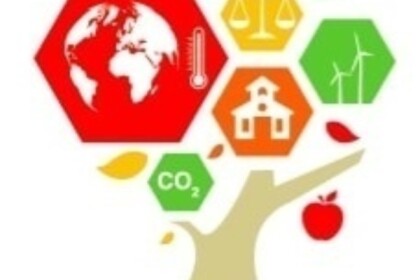
STEM In The Community

Calling all Climate Conscious Teachers! MIT Seeks Cape Teachers to Pilot Interdisciplinary Curriculum

MIT’s Climate Action Through Education (CATE) program is an interdisciplinary, standards-aligned climate change curriculum developed by 5 Massachusetts teachers. The materials within the program complement other disciplines and hold a focus on climate solutions. The program works to teach climate change through multiple disciplinary lenses and relates climate change to local or regional impacts/ solutions, thereby tackling the global problem in a more digestible and empowering way.
Learn more about the program via the interview below with the Program Manager, Aisling O’Grady, including how Cape Cod teacher can get involved.
What Is the CATE Program?
MIT's Climate Action Through Education (CATE) program, developed by a team of 5 local teachers, is an interdisciplinary, standards-aligned climate change curriculum that emphasizes climate solutions. Our materials can stand alone or complement each other and are for high school classes in English/Language Arts, History/Social Science, Math and Science.
The curriculum has gone through feedback sessions with 16 MA high school teachers, and most recently MIT grad students and postdoctoral associates.
This 2022-2023 school year we are running a PAID opportunity for Massachusetts high school teachers, and middle school teachers, to test pieces of our curriculum in their classrooms as part of our Pilot Program. Participating teachers will receive a stipend per lesson they test, for a maximum of $400 per teacher.
Optional programming is also available – in-person meetings on MIT’s campus, pairing with grad students or postdoctoral associates as climate advisors, climate info sessions via zoom with MIT grad students, and our Earth Day 2023 event on campus. All participants have access to the CATE curriculum, CATE team, and MIT resources and tools.
Uniquely tackling climate change from multiple disciplinary perspectives provides an opportunity for students to have a well-rounded understanding of a global issue.
What makes the curriculum unique or exciting?
CATE program goes beyond the science of climate change and incorporates climate solutions wherever possible. While understanding the science of climate change is essential, the issue itself is all-encompassing. The history of industrialization and development, the social impacts of current warming and climate policies and solutions going forward, climate policy generally, the history of the environmental and climate movements, issues of environmental justice, relevant local and global systems and their key players, personal impact – all critical topics that cannot be justly understood from the science perspective alone. Uniquely tackling climate change from multiple disciplinary perspectives provides an opportunity for students to have a well-rounded understanding of a global issue.
Likewise, incorporating climate solutions is exciting because it can engage students in a topic that can be otherwise unrelatable. Our curriculum includes place-based learning components that connect climate change to local or regional impacts and solutions. Engaging with solutions and local examples will ideally fill students with a sense of hope, agency, and connection to tackling climate change.
Lastly, this curriculum excitingly embraces MIT research and resources for an up-to-date, fact-based, objective set of materials that is likewise developed by local high school teachers.
How was the curriculum developed?
This curriculum was developed by our team of five local high school teachers: Amy Block, a Math teacher at the Governor’s Academy; Lisa Borgatti, a Science teacher at the Governor’s Academy; Michael Kozuch, a History teacher at Newton South High School; Gary Smith, a Science teacher at St. John’s Preparatory, and Kathryn Teissier du Cros, a Language Arts teacher at Newton North High School. This team was first tasked with considering how climate change inherently relates to each of their disciplines and then finding the commonalities between each. We then determined our larger goals and tasked our teachers with including them: place-based learning, MIT resources, interdisciplinarity, a focus on climate solutions, and alignment with existing curriculum requirements for their disciplines. The teachers worked independently, and together, to develop our inaugural set of modular curricula.
Why did MIT choose to create an interdisciplinary curriculum for climate change?
We chose to go an interdisciplinary route for the topic because climate change, like all real-world problems, does not fit neatly into one subject. To justly understand and begin to think about tackling climate change, students will benefit from opportunities to grapple with the ambiguity of the problem. Including multiple disciplinary perspectives also ensures a well-rounded approach that will challenge students to think critically. For example, understanding the developed world’s dependence on fossil fuels and considering how to transition to low-carbon fuels must include perspectives from: Physics and Math about energy basics, History about development and environmental justice, and English/Language Arts about communication and presentation of one’s ideas.
Including multiple disciplinary perspectives also ensures a well-rounded approach that will challenge students to think critically.
What are some of the challenges of implementing an interdisciplinary curriculum and how can teachers overcome those challenges?
The primary challenge in implementing an interdisciplinary curriculum is that our education system is inherently disciplinary. Our curriculum is unique in that it is developed by an interdisciplinary team, but within the framework of traditional disciplinary requirements. This is one way to tackle the challenges associated with interdisciplinary education, but another is for teachers to collaborate with their colleagues on lesson/unit topics or projects. For example, a Math teacher could use our Demystifying the Greenhouse Effect Lab to complete relevant graphing activities in their class followed by the same students completing the complementary lab in their Science class – all with shared data. Likewise, some high schools have courses that are taught by teachers of different disciplines – American Studies is traditionally taught jointly by an English teacher and a History teacher. Teachers can advocate for courses like these, using existing precedents for justification.
How can teachers get involved?
This school year we are looking for high school teachers of all disciplines to pilot lessons from our curriculum at the rate of a up to $100 stipend per lesson for a max of $400 pp. Our pilot program also includes optional programming: potential PDPs, pairings with MIT grad students, two in-person* meetings with the cohort of participants and the MIT team, and climate info sessions (via zoom) with grad students. Interested teachers can apply at bit.ly/CATEPilotProgram and/or email Aisling O’Grady for more information at aogrady@mit.edu.
*in-person attendance can be flexible.